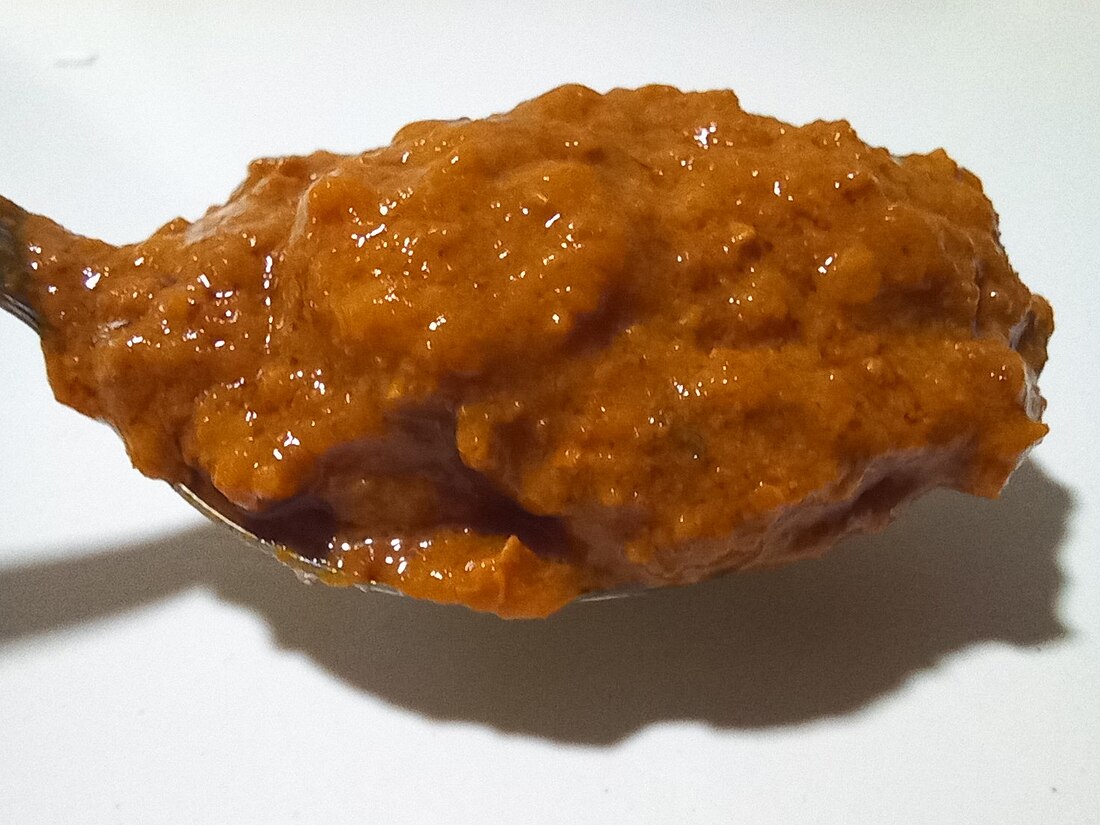Top Qs
Timeline
Chat
Perspective
Taba ng talangka
Filipino seafood paste From Wikipedia, the free encyclopedia
Remove ads
Tabâ ng talangkâ (Tagalog pronunciation: [tɐˈbaʔ nɐŋ tɐlɐŋˈkaʔ]), also known simply as aligí or aligé (Tagalog pronunciation: [alɪˈgɛ]; Philippine Spanish aligué), is a Filipino seafood paste derived from the roe and reddish or orange tomalley of river swimming crabs or Asian shore crabs (talangkâ).[1][2][3]
Commercially sold variants of the condiment are sautéed in garlic, preserved in oil, and sold in glass jars.[4] In parts of Pampanga and Bulacan, a preparation of the dish called burong tabâ ng talangkâ (fermented crab fat) consist of fresh river crabs stored covered in salt as a method of preservation. This variant is served during mealtime and is immediately consumed due to its perishability once removed from the salting container.[5]
It can be served as an accompaniment to white rice, used as a condiment, or used as an ingredient in various dishes. Most notably, it is used as an ingredient of a variant of sinangag (Filipino fried rice) known as inaligíng sinangág.[6][7]
Remove ads
See also
References
Wikiwand - on
Seamless Wikipedia browsing. On steroids.
Remove ads


